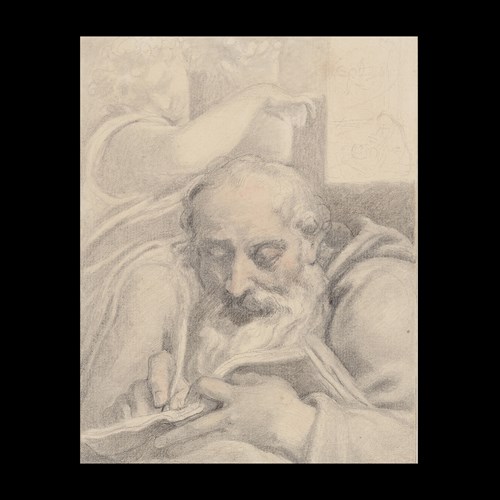DAVID DES GRANGES
James II as Duke of York (1633-1701); circa 1649/50
The Limner Company : Portrait Miniature
Date Circa 1649/50
Medium Watercolour and bodycolour on parchment
Dimension 6.1 cm (2³/₈ inches)
The dating of this miniature can be evidenced by several factors. Firstly, it aligns closely with Sir Peter Lely’s oil portrait of the three younger children of Charles I, painted while they were in the custody of the Duke of Northumberland in 1647. In the year following, Lely painted the double portrait of Charles I and his son James (who was by then in captivity). Like the portraits painted in the early 1650s, also by des Granges, this image of James was constructed from earlier images, as he could not be present for the miniature. Although this bucked the tradition of having the sitter in attendance for his or her portrait miniature, the recipient (often a highly valued member of the royal household or important royalist) was still given a sense of the sitter’s presence. As well as being highly portable and easily hidden, the intimate nature of portrait miniatures was well-established by this date and the recipient would have been rewarded for their loyalty by this decidedly personal gift.
Contemporary accounts show that des Granges was working in Scotland (Perth) for the Royal Household at this date. His appointment as ‘His Majesty's Limner in Scotland’ in 1651 kept him busy producing portrait miniatures for those closest to the royal family. Stylistically, this portrait of James conforms to the known portraits of his brother Charles, further confirming the likely dating to the early 1650s.[1]
The unusual frame is a further clue to the dating of this miniature, as it would have reminded the owner of the death of James’s father, Charles I (note the bones which act as a border, engraved into the silver). A type of ‘vanitas’, this message would have been clear – the time in which a legitimate line of monarchs to be restored was not infinite.
Born in 1633 and named after his grandfather James I, James II grew up in exile after the Civil War (in France, the Dutch Republic and Germany) . During this time James proved a brave and effective soldier in both the French and Spanish armies, and saw action at the Battle of the Dunes. In 1673, by which time he was an open Catholic, the Test Act debarred him from public office and forced his resignation as Lord High Admiral. Charles, who had characterized his stubborn inflexibility as 'la sottise de mon frère' (the stupidity of my brother), had predicted that if James became king he would not remain so for more than four years. He lasted only three. In 1688, a highly placed Protestant cabal - fearing a new civil war - engineered the almost bloodless ‘Glorious Revolution’ which replaced him with his Protestant daughter Mary and her Dutch husband, Prince William of Orange, as joint monarchs William III and Mary II.
[1] Des Grange’s career can be traced back to when he was still in his teens, when stylistically he followed the path of the elder Hoskins and Peter Oliver. The present work is quite different in technique and very close in style to his output while in Scotland.
Date: Circa 1649/50
Medium: Watercolour and bodycolour on parchment
Signature: Inscribed verso ‘REMEMBER DEATH’ with a border of engraved bones
Dimension: 6.1 cm (2³/₈ inches)
Provenance: The Collection of Edward Grosvenor Paine, Christie’s, 23 October 1979, lot 29;
Private Collection, UK.
Literature: Ed. Dr Bendor Grosvenor; Curated by Emma Rutherford, Warts and All: Portrait Miniatures of Samuel Cooper exhibition catalogue.; p. 88
Exhibition: Philip Mould Gallery, ‘Warts and All: Portrait Miniatures of Samuel Cooper’, 13 November-7 December 2013.
Plus d'œuvres d'art de la Galerie


 circa 164950_T638814186172772396.JPG?width=2000&height=2000&mode=max&scale=both&qlt=90)



, after JOHN HOPPNER (1758-1810)-Portrait of Frances Fitzroy, née Mundy (d.1797), turned to the left, her head resting on h_T638835205315018246.JPG?width=500&height=500&mode=pad&scale=both&qlt=90&format=jpg)


, aged 15, wearing a black jacket and white stock_T638737693792178764.JPG?width=500&height=500&mode=pad&scale=both&qlt=90&format=jpg)